Hi! For some time my pink girl has been complaining that it stinks from the socket (no associations  ) due to the fact that my sense of smell is not the best, I thought that the smells from the neighbors get through a crack and that's it. Unfortunately, some time ago my door frame came out, I did not splash the foam with water after assembly and I thought that the foam only swelled now. Yesterday I decided to remove the skirting boards in the bedroom and this view appeared:
) due to the fact that my sense of smell is not the best, I thought that the smells from the neighbors get through a crack and that's it. Unfortunately, some time ago my door frame came out, I did not splash the foam with water after assembly and I thought that the foam only swelled now. Yesterday I decided to remove the skirting boards in the bedroom and this view appeared:
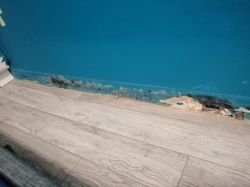
on the other side of the kitchen door I also took off:
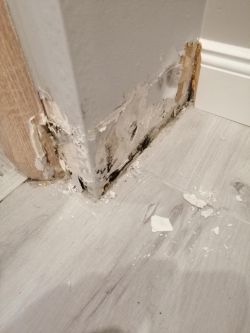
I started to dismantle the wall next to the door frame, the kg plates were coming off almost by themselves:
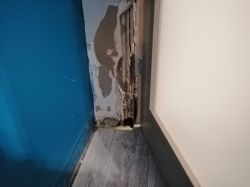
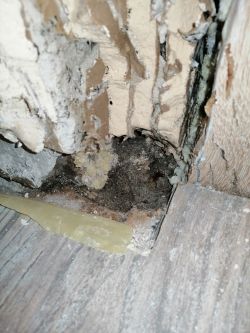
it turned out that the spout was soaked in water and it was possible to pick at it with a screwdriver:
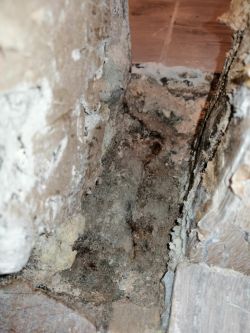
I picked out what I could and it fell off by itself and started to dry with a farel, I scraped to the brown sand, at the moment I have it a little dry, but when I dig my fingers in this hole on the sides I still feel wet sand, which is starching as much as possible and I pull it with a vacuum cleaner, it looks like this :
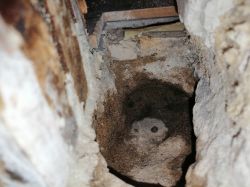
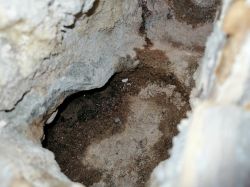
From the bottom you can feel hard concrete that does not crumble. I have no idea what to do next, the bedroom was renovated a year ago and when I put the door in there was no moisture there, everything was even dry. Due to the fact that the building is from the 60-70s, I have no idea if there are any pipes in the floor or if it was insulated in any way from the bottom. I removed the fungus from under the slats mechanically, the walls do not seem to get wet, but when I broke off a piece of the board kg, I saw that there are black dots on the other side of the board (the wall is silenced with rock wool / frame / kg plates), in the kitchen the plates are glued to the cakes and also I can see the dots on the glued side, do I have to replace it or will this fungus die by itself after removing the moisture? I am broken, can anyone advise me something?

on the other side of the kitchen door I also took off:

I started to dismantle the wall next to the door frame, the kg plates were coming off almost by themselves:


it turned out that the spout was soaked in water and it was possible to pick at it with a screwdriver:

I picked out what I could and it fell off by itself and started to dry with a farel, I scraped to the brown sand, at the moment I have it a little dry, but when I dig my fingers in this hole on the sides I still feel wet sand, which is starching as much as possible and I pull it with a vacuum cleaner, it looks like this :


From the bottom you can feel hard concrete that does not crumble. I have no idea what to do next, the bedroom was renovated a year ago and when I put the door in there was no moisture there, everything was even dry. Due to the fact that the building is from the 60-70s, I have no idea if there are any pipes in the floor or if it was insulated in any way from the bottom. I removed the fungus from under the slats mechanically, the walls do not seem to get wet, but when I broke off a piece of the board kg, I saw that there are black dots on the other side of the board (the wall is silenced with rock wool / frame / kg plates), in the kitchen the plates are glued to the cakes and also I can see the dots on the glued side, do I have to replace it or will this fungus die by itself after removing the moisture? I am broken, can anyone advise me something?


